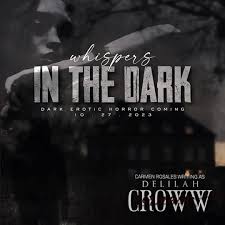The Rise of Indian Noir
In conclusion, Indian crime fiction has experienced a radical transformation from traditional detective stories into bold, realistic portrayals of modern life. This has resulted in an offshoot known as Indian noir, a form of crime fiction characterized by gritty urbanism, antiheroes, and a bleak portrayal of modern Indian society. Whispers in the Alley is a representation of this revolution, providing readers with a ticket to the dark side of India’s urban centers, where crime and vice continue.
The Evolution of Indian Crime Fiction
From Classic Detectives to Dark Realism
Initially, the Indian crime was western-oriented with influences of Agatha Christie and Arthur Conan Doyle. But the genre has grown, accommodating stories based on the indigenous settings of Indian society and politics. Writers in turn are now addressing issues such as chronic corruption, class hatred and urban degeneration, offering a more credible depiction of crime in India.(CrimeReads)
The Emergence of Indian Noir
Indian noir stands apart by its focus on the underbelly. These stories tend to star anti-heroes, grapple with huge moral conundrums and are set against backdrops that bring to life the extremes of Indian cities. The genre doesn’t sugar the pill on violence or taboo topics, which should make this a fascinating read for anyone interested in the dark corners of urban life.
Key Authors Shaping Indian Noir
Vish Dhamija
Dubbed “India’s John Grisham,” Vish Dhamija has made significant contributions to the legal thriller subgenre. His Rita Ferreira series, including titles like ‘Bhendi Bazaar’ and ‘Doosra,’ offers gripping narratives that intertwine crime, law, and the complexities of Indian society. (Wikipedia)
Deepti Kapoor
In ‘Age of Vice,’ Deepti Kapoor presents an epic tale set in New Delhi, exploring the intertwining lives of gangsters, journalists, and politicians. The novel delves into themes of power, corruption, and the pursuit of wealth, encapsulating the essence of Indian noir. (Pecinta Fiksi Kriminal)
Nilanjana Roy
Nilanjana Roy’s ‘Black River’ is a poignant exploration of crime in rural India. The novel delves into the complexities of caste, justice, and societal norms, offering a narrative that’s both compelling and thought-provoking. (Talking About Books)
Notable Works in Indian Noir
‘Sacred Games’ by Vikram Chandra
A seminal work in Indian crime fiction, ‘Sacred Games’ intertwines the lives of a Mumbai police officer and a notorious gangster. The novel delves deep into the city’s criminal underworld, exploring themes of power, religion, and morality. (The New Yorker)
‘Khakee: The Bengal Chapter’
This Netflix series, a sequel to ‘Khakee: The Bihar Chapter,’ shifts the narrative to Bengal, focusing on gangster-politician Bagha. The series delves into themes of corruption and power within Bengal’s political landscape, elements common to Indian crime dramas. (Decider)
Thematic Elements Defining Indian Noir
Urban Decay and Corruption
Indian noir often portrays cities as characters in themselves, highlighting their decay and the pervasive corruption that infiltrates every level of society. These narratives expose the challenges faced by individuals navigating these environments, often blurring the lines between right and wrong.
Complex Characters and Moral Ambiguity
Unlike traditional crime fiction, Indian noir doesn’t offer clear-cut heroes or villains. Characters are multifaceted, often grappling with their own moral dilemmas, making choices that reflect the complexities of real life.
The Global Appeal of Indian Noir
Indian noir has garnered international attention, with works being translated into multiple languages and adapted into films and series. The genre’s unique blend of cultural specificity and universal themes resonates with a global audience, offering fresh perspectives on crime and society.(Decider)
The Allure of ‘Whispers in the Alley’
Whispers in the Alley is classic Indian noir that takes the reader on a guided tour of the seedy underworld of India’s cities, a place where crime, corruption and moral ambiguity rule. And as the genre evolves, so will the promise to present exciting and compelling narratives which mirrors the complexities of the society that makes contemporary India.
Frequently Asked Questions (FAQ)
Q1: What distinguishes Indian noir from traditional crime fiction?
Indian noir focuses on the darker aspects of society, often featuring morally ambiguous characters and settings that highlight urban decay and systemic corruption.
Q2: Are there any notable Indian noir series available for streaming?
Yes, series like ‘Khakee: The Bengal Chapter’ on Netflix delve into themes common to Indian noir, such as corruption and power dynamics. (Decider)
Q3: Who are some prominent authors in the Indian noir genre?
Authors like Vish Dhamija, Deepti Kapoor, and Nilanjana Roy have made significant contributions to Indian noir, each bringing unique perspectives to the genre.(Wikipedia)
Q4: What themes are commonly explored in Indian noir?
Common themes include urban decay, corruption, moral ambiguity, and the complexities of societal structures in India.
Q5: How has Indian noir evolved over the years?
Indian noir has transitioned from traditional detective stories to narratives that delve deeper into societal issues, reflecting the changing dynamics of Indian society.